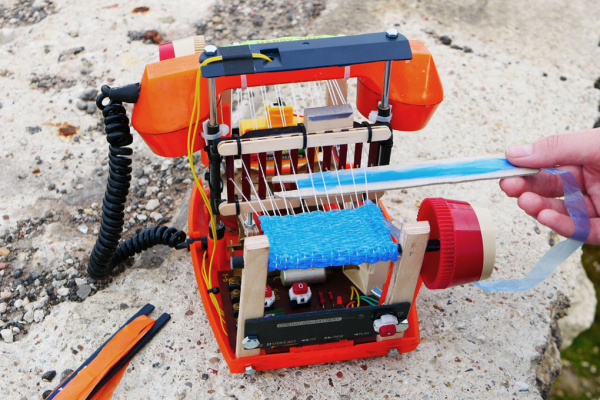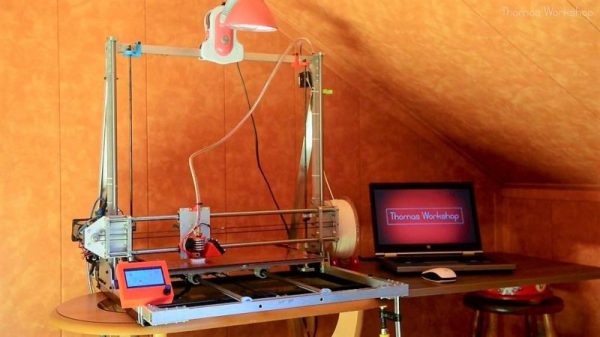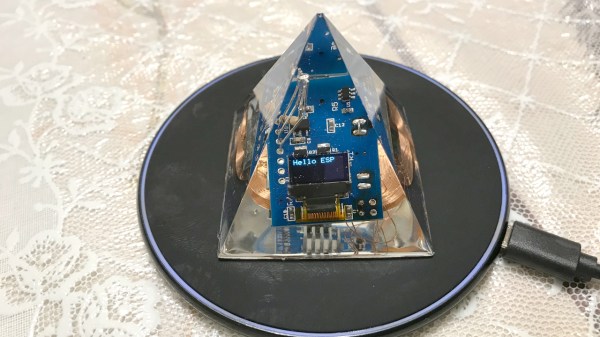What does post-apocalyptic technology look like? Well, that kind of depends on the apocalypse. Regardless of the cause, we’ll need to be clever and resourceful and re-learn ancient crafts like weaving and pottery-making. After all, the only real apocalyptic constants are the needs of the survivors. Humans need clothing and other textiles. Fortunately, weaving doesn’t require electricity—just simple mechanics, patience, and craftsmanship.
If it turns out the apocalypse is scheduled for tomorrow, we’ll have piles and piles of e-waste as fodder for new-old looms. This adorable loom is a mashup of old and new technologies that [Kati Hyyppä] built at an artist residency in Latvia, a country with a rich historical tapestry of textile-making. It combines a cheerful orange telephone with an old cassette player and some telescoping rods from a radio antenna. [Kati] reused the phone’s hang-up switch to trigger tunes from a deconstructed toddler toy every time the receiver is lifted. Check it out after the beep break.
And yeah, you’re right, it does use batteries. But the looming part doesn’t require power, only the music. In case of apocalypse, just scrounge up a solar panel.
If you’d rather be prepared to have to make your own clothes someday, print this loom beforehand.











 His first works of electronic art were a couple of transistors and some ICs, including an 80386, encased in epoxy. But then he realized that he wanted the electronics to do something interesting. However, once encased in epoxy, how do you keep the electronics powered forever?
His first works of electronic art were a couple of transistors and some ICs, including an 80386, encased in epoxy. But then he realized that he wanted the electronics to do something interesting. However, once encased in epoxy, how do you keep the electronics powered forever?







